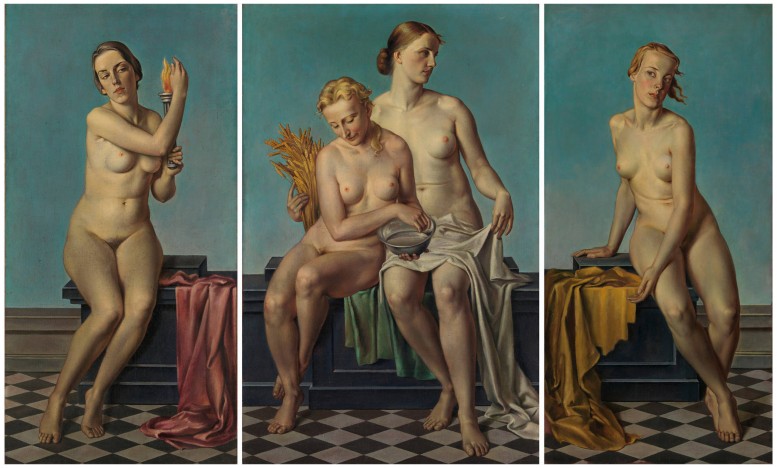Chaos & Classicism
 Adolf Ziegler 'The Four Elements: Fire, Water and Earth, Air' before 1937
Adolf Ziegler 'The Four Elements: Fire, Water and Earth, Air' before 1937
The above painting is one of the works on display at the Guggenheim NY that explores artworks from France, Italy, and Germany between World War I and II. Today is the last day of the exhibit. Adolf Ziegler's The Four Elements was hung in Adolf Hitler's apartment in Munich. To Hitler the painting exemplified his ideal of what art should be: "realist, idealizing, and classical." Hitler despised modernism. The artist Ziegler was hired by Hitler to head the The Reich's "Chamber of Visual Arts." Its chief responsibility was to absquatulate all modernist artworks from German museums. Ziegler, who who was already a member of the Nazi party, met Hitler in the early 1920s. Ziegler became Hitler's "artistic advisor" in 1925. Hitler commissioned Ziegler to paint a portrait of his niece, Geli Raubal, who committed suicide with a single gunshot wound to her lung, after an apparent fight with her uncle, in the same Munich apartment; she was 25. Chaos and Classicism: Art in France, Italy, and Germany, 1918–1936 is a fascinating look at an artistic movement in Europe that reverted, with almost wishful thinking, to more idealized forms after one the most brutal, violent wars in human history. Click here for more info.

